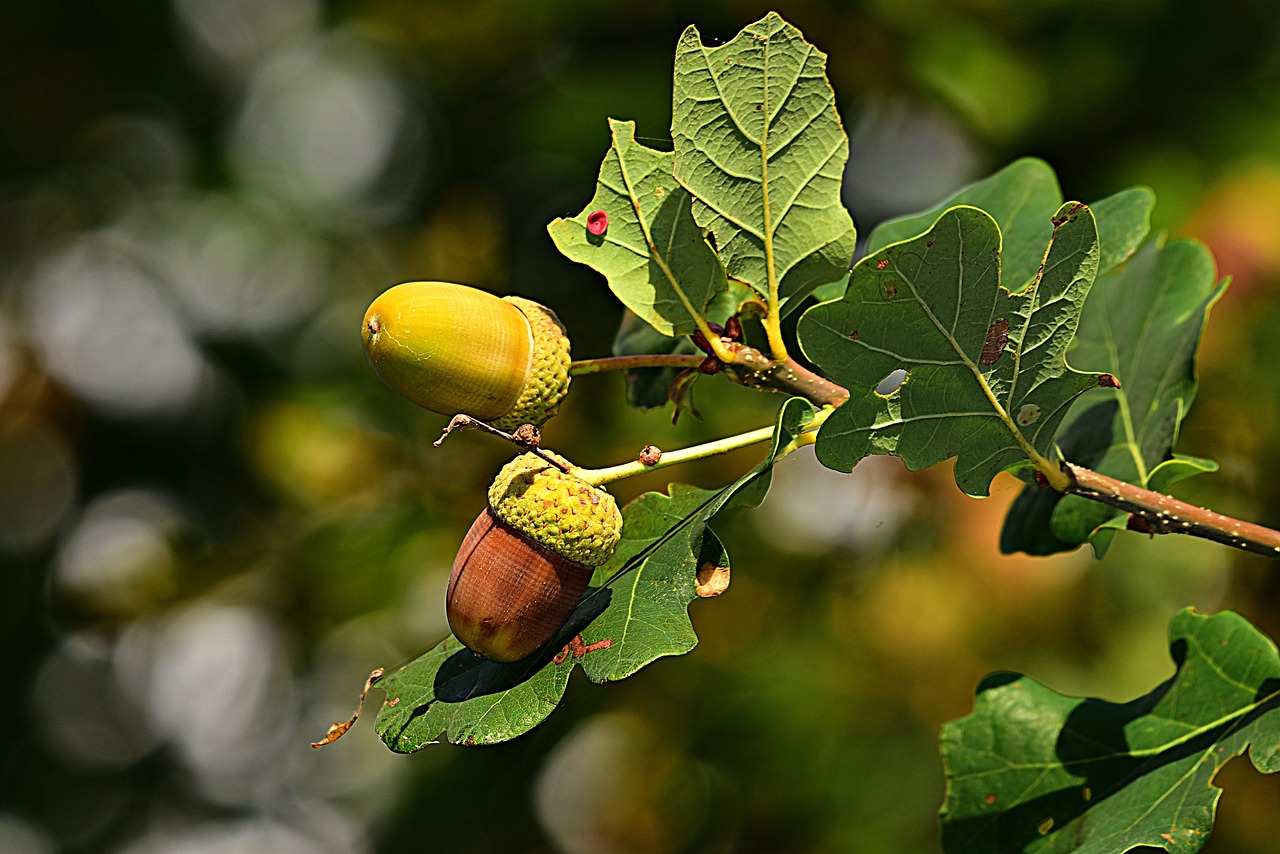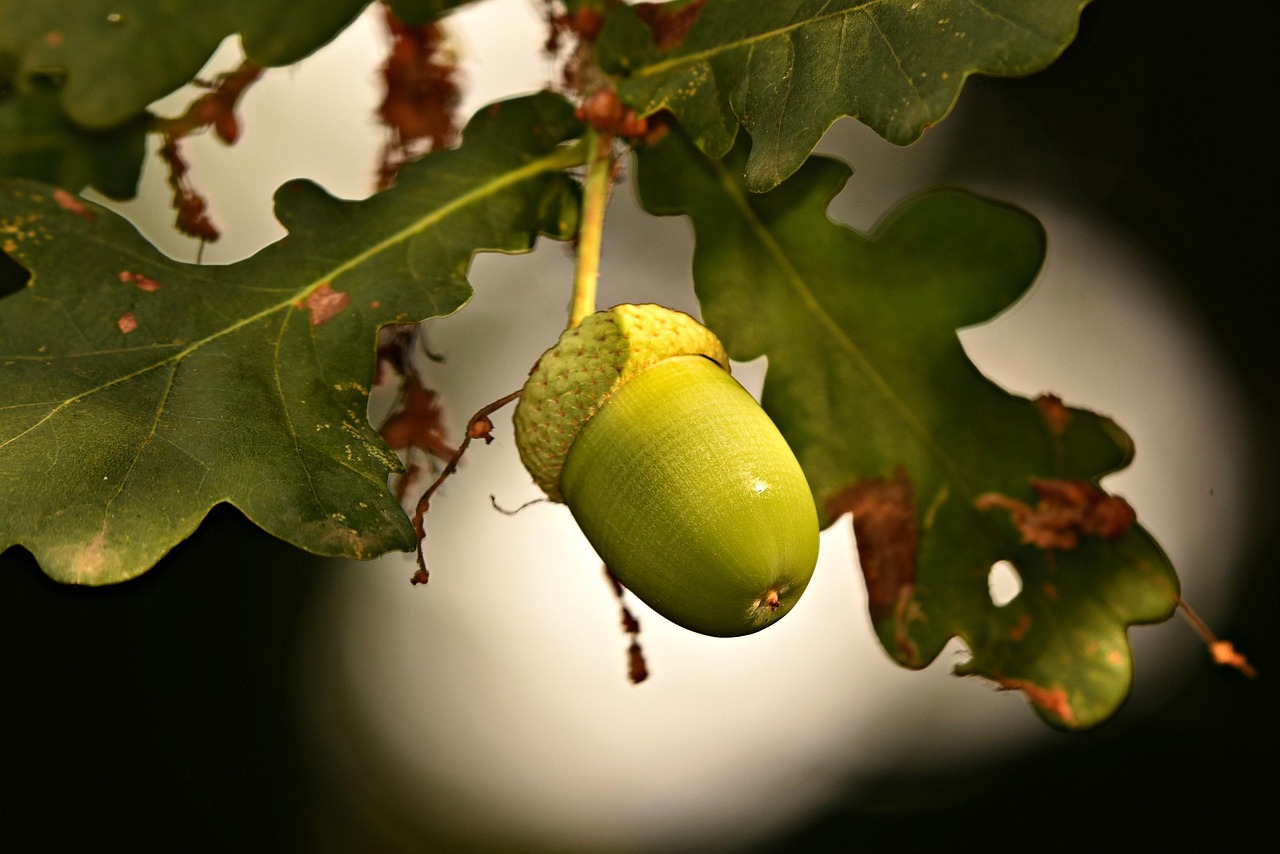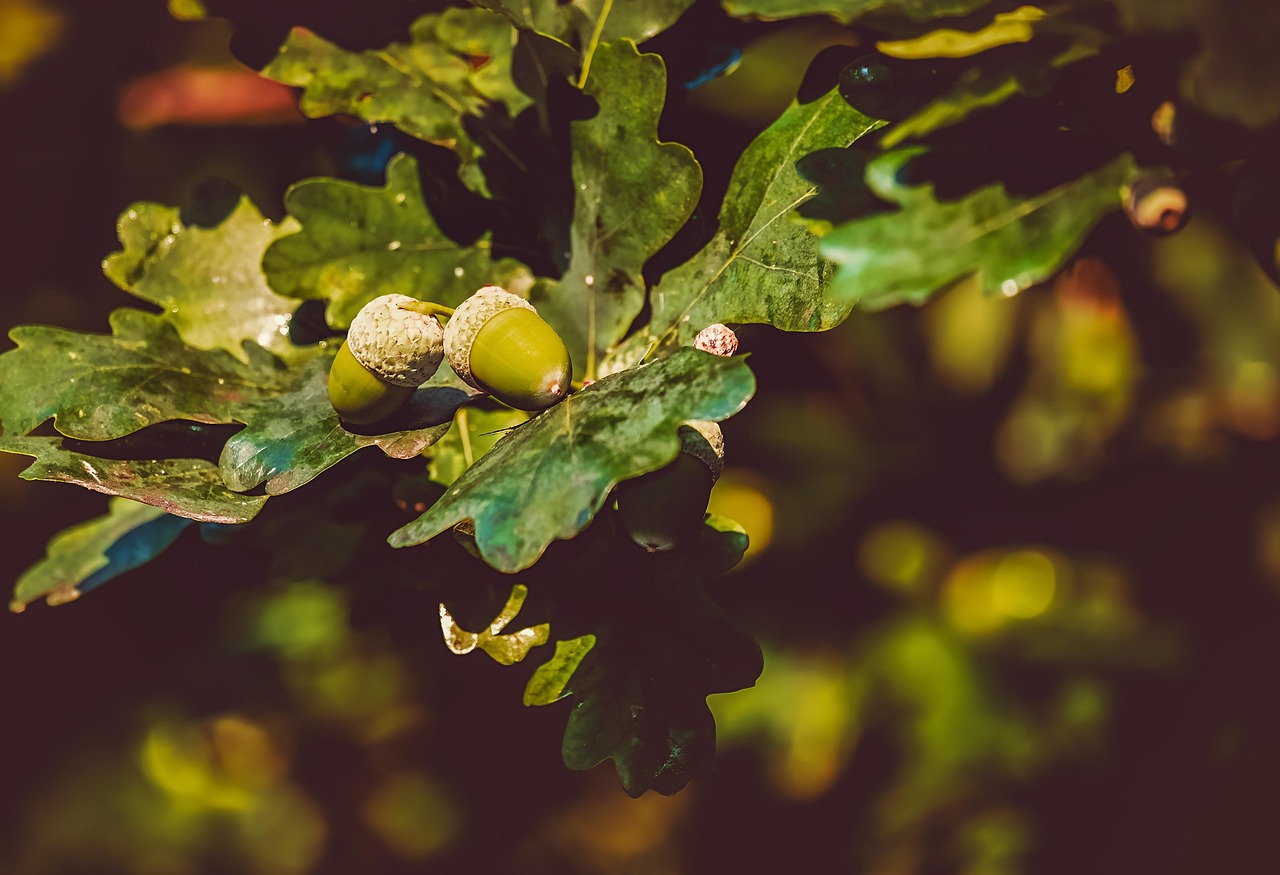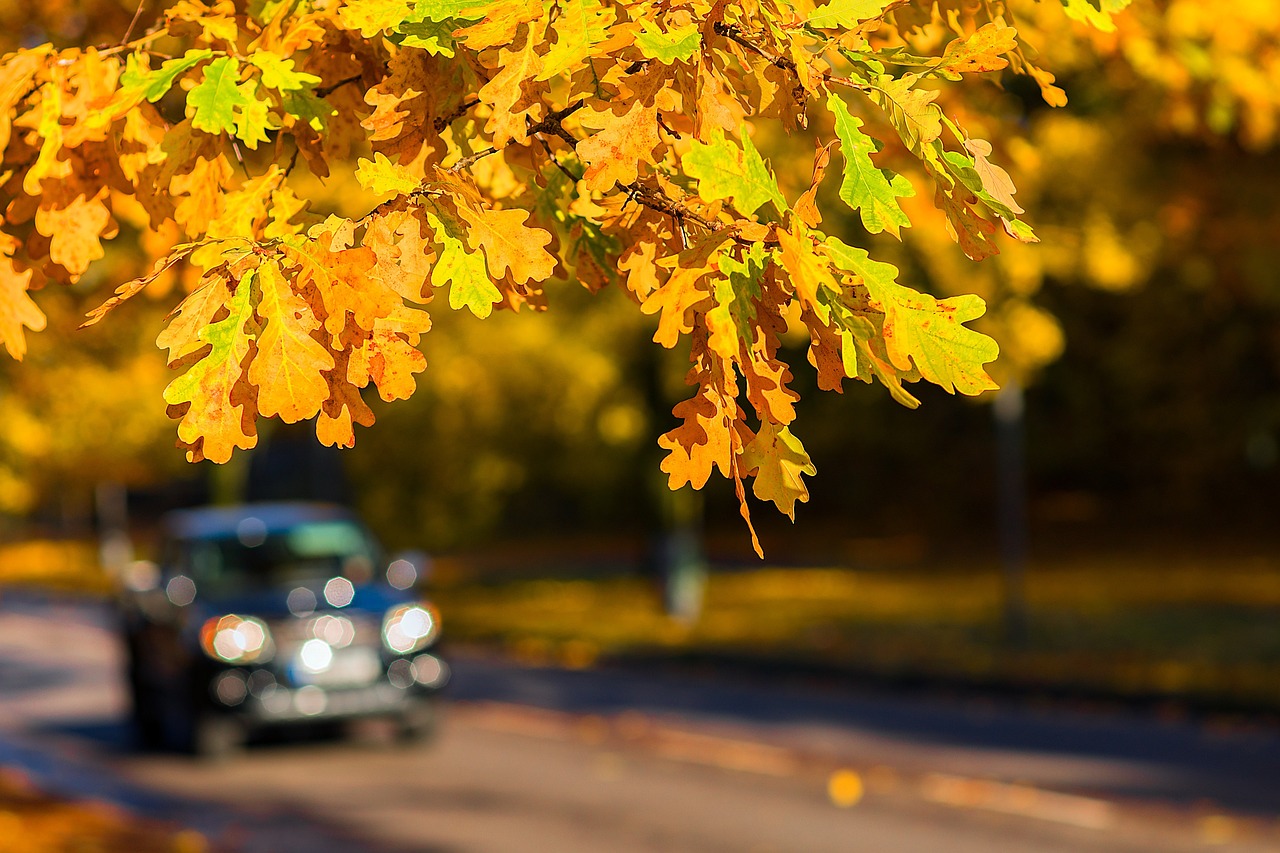Oak trees are susceptible to various pests and wildlife, including insects like the oak leaf caterpillar, bark beetles, and aphids. Additionally, animals such as deer and squirrels may feed on oak leaves, acorns, and bark, potentially harming the tree’s health.
Understanding Oak Trees and Their Importance

Oak trees, belonging to the genus Quercus, are some of the most significant trees in temperate regions. They are known for their strength, longevity, and ecological contributions. Oaks provide habitats for numerous species of wildlife and play a crucial role in forest ecosystems. Their acorns serve as an essential food source for various animals, including birds, rodents, and larger mammals.
In addition to their ecological importance, oak trees are also valued for their timber. The wood is used in furniture making, flooring, and construction due to its durability and attractive grain. However, maintaining the health of oak trees is vital for both environmental balance and economic value. Understanding what threatens these trees is essential for effective management and preservation.
Common Pests Affecting Oak Trees
Several pests target oak trees, causing significant damage if left unchecked. Recognizing these pests early can help in implementing control measures to protect the trees. Below are some common pests that infest oak trees:
- Oak Leaf Caterpillar: The larvae of this moth feed on oak leaves, creating noticeable defoliation. Heavy infestations can weaken the tree.
- Bark Beetles: These insects bore into the bark and can compromise the tree’s integrity. They often target stressed or weakened trees.
- Aphids: These small insects suck sap from leaves and can lead to yellowing and curling of foliage. They also excrete honeydew, which attracts other pests.
- Gypsy Moth: This invasive species can cause extensive defoliation, especially in young oaks. Their caterpillars are voracious eaters.
Wildlife That Feeds on Oak Trees
In addition to insects, several types of wildlife also feed on oak trees. Understanding these animals helps in recognizing potential threats to the trees’ health. Some of them include:
- Deer: Deer are known to browse on young oak leaves and buds. Their feeding can stunt growth or even kill small saplings.
- Squirrels: These rodents often consume acorns and can strip bark from young trees during their search for food.
- Woodpeckers: While they primarily feed on insects within the bark, woodpeckers can cause damage to oak trees by pecking holes for access.
- Rabbits: In some regions, rabbits may feed on young shoots and bark, particularly in winter when food is scarce.
The Impact of Pests and Wildlife on Oak Health
The presence of pests and wildlife feeding on oak trees can have various effects on their health. Infestations can lead to defoliation, reduced growth rates, and increased vulnerability to diseases. For example, a tree that has lost a significant amount of foliage may struggle to photosynthesize effectively. This stress can make it more susceptible to further infestations or environmental stressors.
To better understand the impact of pests on oak trees, consider the following table that summarizes the effects of specific pests:
| Pest | Impact |
|---|---|
| Oak Leaf Caterpillar | Defoliation leading to weakened trees |
| Bark Beetles | Boring into bark causing structural damage |
| Aphids | Sap loss leading to yellowing leaves |
| Gypsy Moth | Severe defoliation impacting tree vitality |
Caring for oak trees involves monitoring for these pests and understanding the wildlife interactions that can affect their health. With proper management strategies, it is possible to mitigate these threats effectively.
Identifying Signs of Infestation
Recognizing the signs of pest or wildlife infestation on oak trees is crucial for timely intervention. Different pests exhibit distinct behaviors and symptoms, which can help in diagnosing the type of threat facing the tree. Here are some common indicators to look for:
- Leaf Damage: Look for holes, wilting, or discoloration on the leaves. This can indicate feeding by caterpillars or aphids.
- Bark Damage: Check for peeling bark or holes in the trunk. Bark beetles often leave small holes when they bore into the tree.
- Droppings: Small frass (insect droppings) may accumulate on the ground beneath the tree, indicating an insect presence.
- Presence of Sooty Mold: A black, sooty residue on leaves can suggest an aphid infestation, as it is caused by their honeydew excretions.
Monitoring Oak Tree Health
Regular monitoring of oak trees can help detect problems before they escalate. Here are some effective methods for observing tree health:
- Visual Inspections: Conduct routine checks of the tree’s foliage, bark, and overall structure. This helps in identifying any early signs of pests.
- Soil Testing: Evaluate soil quality to ensure it is nutrient-rich and supports healthy growth. Poor soil can stress trees, making them more susceptible to pests.
- Pest Traps: Utilize sticky traps and pheromone traps to monitor insect populations. These tools can help in assessing pest levels and taking action when necessary.
- Professional Assessments: For significant concerns, consulting an arborist or tree care professional can provide detailed insights into the tree’s health and potential threats.
Natural Predators and Biological Control
In nature, various predators help control pest populations on oak trees. Incorporating biological control methods can reduce pest numbers without harming the ecosystem. Here are some natural predators to consider:
- Lacewings: The larvae of lacewings feed on aphids and caterpillars, making them beneficial for controlling these pests.
- Ladybugs: Known for their appetite for aphids, ladybugs can significantly reduce their populations when introduced to infested areas.
- Parasitic Wasps: These tiny wasps lay their eggs inside pest larvae, effectively controlling populations like those of caterpillars and aphids.
- Nematodes: Beneficial nematodes can target soil-dwelling pests, providing another layer of protection for oak trees.
Cultural Practices for Oak Tree Care
Implementing good cultural practices can promote healthy growth in oak trees and help prevent pest infestations. Consider these practices:
- Proper Watering: Ensure oak trees receive adequate water, especially during dry periods. Deep watering encourages strong root systems.
- Mulching: Apply mulch around the base of the tree to retain moisture and suppress weed growth, which can compete for nutrients.
- Pruning: Regularly prune dead or diseased branches to improve air circulation and reduce pest habitats.
- Diversity Planting: Avoid monocultures by planting a variety of species nearby. This can deter pests that prefer specific host plants.
Pesticides and Management Strategies
If infestations are severe, it may be necessary to use pesticides as part of a management strategy. However, it is essential to choose products that are effective yet safe for the environment. Here are some considerations:
- Integrated Pest Management (IPM): This approach combines biological control, cultural practices, and targeted pesticide use to manage pests sustainably.
- Selecting Targeted Pesticides: Use pesticides that specifically target the pests affecting oak trees while minimizing harm to beneficial insects.
- Timing Applications: Apply pesticides when pests are most vulnerable, typically during early life stages or when populations peak.
Taking proactive steps in monitoring, cultural practices, and pest management will contribute to the long-term health of oak trees and their ecosystems.

Common Diseases Affecting Oak Trees

In addition to pests and wildlife, oak trees can be susceptible to various diseases that can compromise their health. Identifying these diseases early is crucial for effective treatment and management. Below are some common diseases that affect oak trees:
- Oak Wilt: This fungal disease affects the vascular system of oak trees, leading to rapid decline. Symptoms include wilting leaves and premature leaf drop.
- Anthracnose: Caused by a group of fungi, anthracnose results in dark, sunken lesions on leaves and can lead to defoliation. It is most common in wet conditions.
- Powdery Mildew: This fungal infection appears as a white powdery substance on leaves, inhibiting photosynthesis and leading to leaf drop if severe.
- Root Rot: Various pathogens can cause root rot, leading to root decay. Symptoms include stunted growth and yellowing leaves, often exacerbated by poor drainage.
Symptoms of Oak Tree Diseases
Recognizing the symptoms of diseases affecting oak trees can help in diagnosis and management. Here are some signs to watch for:
- Discolored Leaves: Yellowing or browning leaves can indicate nutrient deficiencies or diseases affecting the foliage.
- Leaf Drop: Premature leaf drop, especially in summer, may suggest stress from disease or environmental factors.
- Crown Decline: A gradual decline in the uppermost branches of the tree can indicate systemic health issues, often associated with root problems or diseases.
- Visible Fungal Growth: Fungal fruiting bodies may appear on leaves, branches, or in the soil around the tree, signaling a fungal infection.
Environmental Factors Influencing Oak Tree Health
The overall health of oak trees can be significantly influenced by environmental conditions. Understanding these factors can help in maintaining robust trees. Key environmental factors include:
- Soil Quality: Healthy soil rich in organic matter supports strong root systems. Soil testing can help determine nutrient levels and pH balance.
- Water Availability: Both drought and excessive moisture can stress oak trees. Ensuring proper drainage and irrigation during dry spells is essential.
- Sunlight Exposure: Oak trees thrive in full sun. Adequate sunlight is necessary for photosynthesis and overall health.
- Climate Conditions: Extreme weather conditions, such as heavy storms or prolonged droughts, can weaken trees and make them more susceptible to pests and diseases.
Preventive Measures for Oak Tree Health
Taking preventive measures is vital for ensuring the long-term health of oak trees. Here are some strategies to consider:
- Regular Inspections: Conducting visual checks throughout the year can help catch early signs of disease or pest issues.
- Fertilization: Use slow-release fertilizers to ensure a steady supply of nutrients throughout the growing season, promoting healthy growth.
- Pruning Practices: Proper pruning techniques should be implemented to remove dead or diseased limbs, enhancing air circulation and reducing disease risk.
- Disease-Resistant Varieties: When planting new oaks, consider selecting varieties known for their resistance to common diseases.
The Role of Community and Education

Community involvement and education play critical roles in preserving oak trees. Engaging local communities in tree care initiatives fosters awareness and encourages collective action. Educational programs can teach residents about best practices for maintaining oak health and identifying threats. Here are some community actions that can be taken:
- Workshops and Seminars: Organize events to educate the public on tree care, pest identification, and sustainable practices.
- Neighborhood Tree Planting Days: Encourage community members to participate in planting new oak trees in local parks or along streets.
- Pest Monitoring Programs: Establish citizen science projects where community members can monitor pest populations and report findings.
- Partnerships with Local Organizations: Collaborate with environmental groups and local governments to promote tree health initiatives.
By fostering a culture of awareness and responsibility regarding oak tree health, communities can collectively contribute to preserving these vital resources for future generations.
Integrating Technology in Oak Tree Monitoring
Advancements in technology can significantly enhance the monitoring and management of oak trees. Utilizing modern tools and methods can help track the health of these trees more effectively. Here are some technological innovations that can be applied:
- Remote Sensing: Satellite imagery and aerial drones can provide insights into tree health by analyzing canopy cover and detecting stress levels from afar.
- Mobile Applications: Various apps allow citizens and arborists to report sightings of pests or diseases, contributing valuable data for research and management.
- Sensors: Soil moisture sensors can help monitor watering needs, while temperature and humidity sensors can provide data on environmental conditions affecting tree health.
- GIS Mapping: Geographic Information Systems (GIS) can help map oak tree populations and track changes over time, assisting in planning conservation efforts.
The Economic Value of Oak Trees
Apart from their ecological importance, oak trees hold significant economic value. Their robust timber is sought after for furniture, flooring, and other construction materials. Additionally, healthy oak trees contribute to property values by enhancing landscape aesthetics. Here are a few economic aspects to consider:
- Timber Production: Oak wood is highly valued in the market, making it a significant source of income for landowners and forestry businesses.
- Tourism and Recreation: Oak trees often contribute to the scenic beauty of parks and natural reserves, attracting tourists and providing recreational opportunities.
- Carbon Sequestration: As large trees, oaks absorb considerable amounts of carbon dioxide, aiding in climate change mitigation efforts which have long-term economic benefits.
- Wildlife Habitat: Healthy oak trees support diverse wildlife populations, which can enhance local ecosystems and promote biodiversity, attracting further economic activities such as birdwatching and eco-tourism.
Community Engagement in Conservation Efforts
Community involvement is key to ensuring the preservation of oak trees. Engaging citizens in conservation efforts not only raises awareness but also fosters a sense of stewardship. Here are some community engagement strategies:
- Volunteer Programs: Organizing volunteer days for tree planting, maintenance, and cleanup activities encourages community participation.
- School Programs: Educational programs in schools can teach children about the importance of trees and inspire future generations to care for their environment.
- Local Advocacy Groups: Forming or joining advocacy groups can amplify community efforts to protect oak trees through lobbying for policies that support tree preservation.
- Public Awareness Campaigns: Developing campaigns that highlight the benefits of oak trees can motivate community members to take action in protecting these vital resources.
Conclusion
The health and vitality of oak trees are crucial for maintaining ecological balance and providing numerous benefits to communities. Understanding what eats oak trees, identifying common pests and wildlife, and recognizing the signs of disease are essential for effective management. By implementing proactive monitoring strategies, engaging in community education, and utilizing technological advancements, we can protect these magnificent trees for future generations.
The integration of cultural practices, community involvement, and environmental awareness fosters a holistic approach to oak tree conservation. Ultimately, the collective effort of individuals, communities, and organizations will ensure that oak trees continue to thrive, enriching our landscapes and ecosystems while providing economic benefits and habitats for diverse wildlife.
As stewards of our environment, it is our responsibility to prioritize the health of oak trees. By doing so, we contribute not only to our immediate surroundings but also to the global ecosystem. Together, we can cultivate a healthier planet for all living beings.
